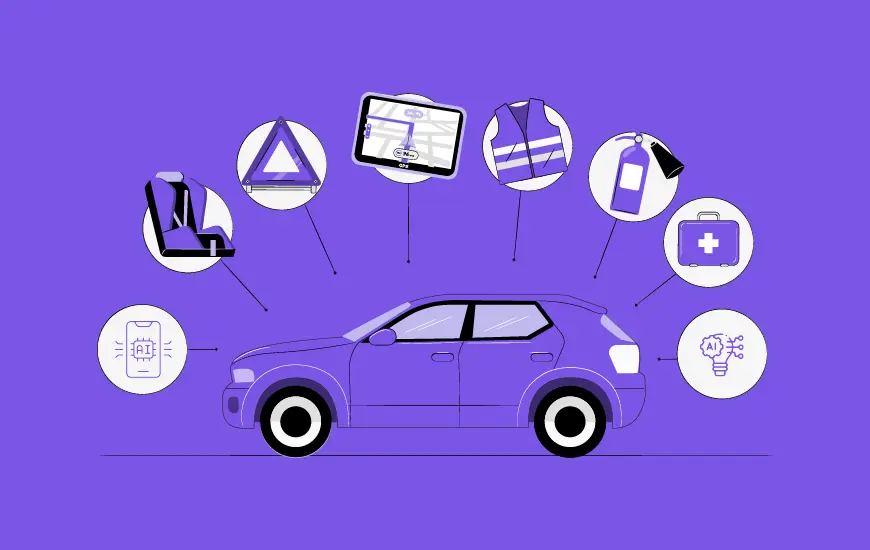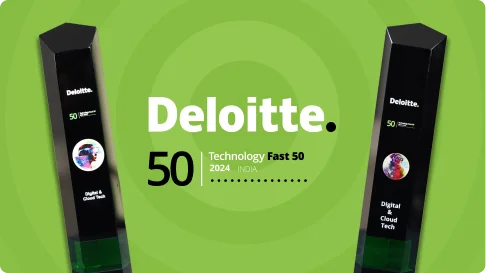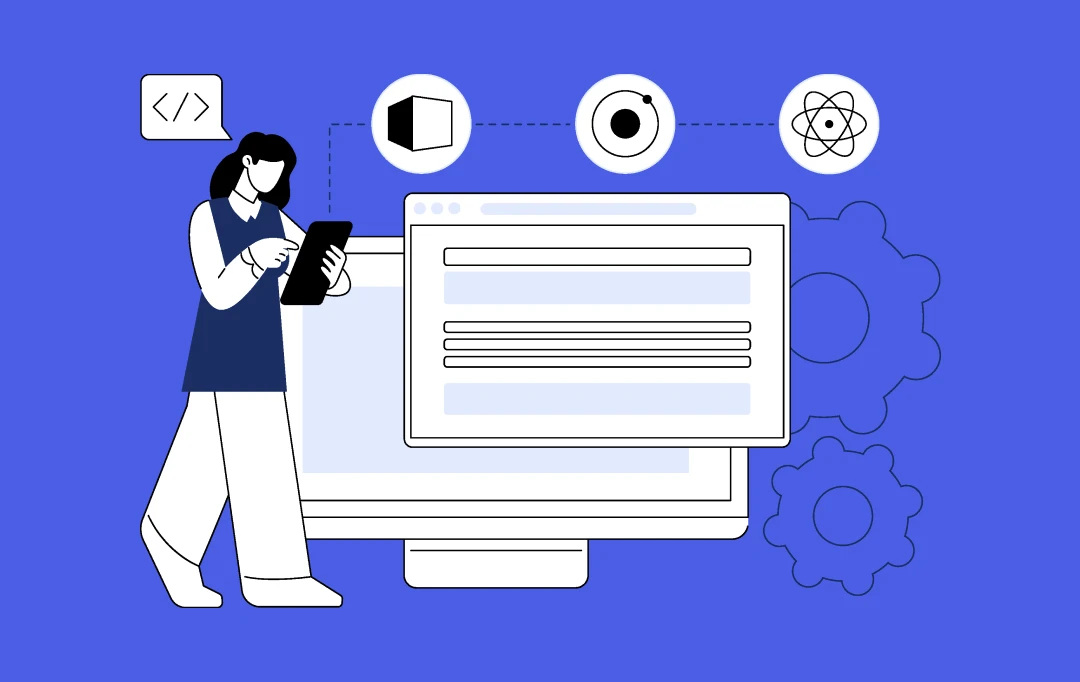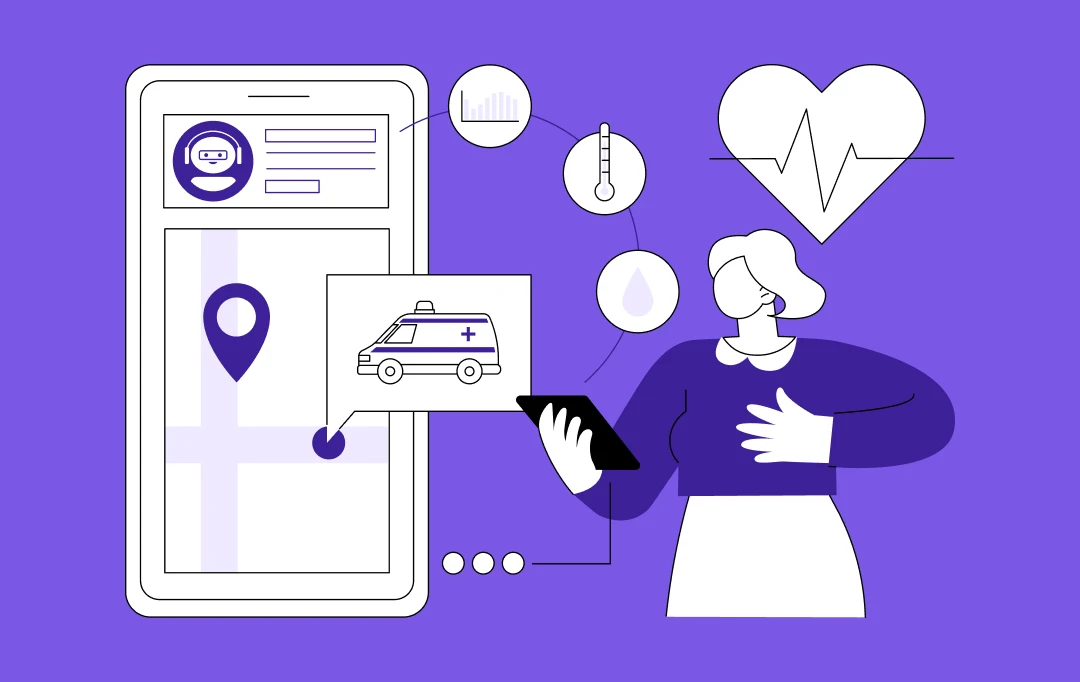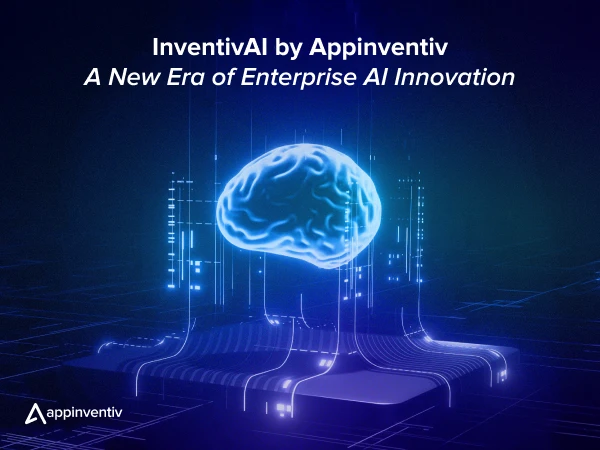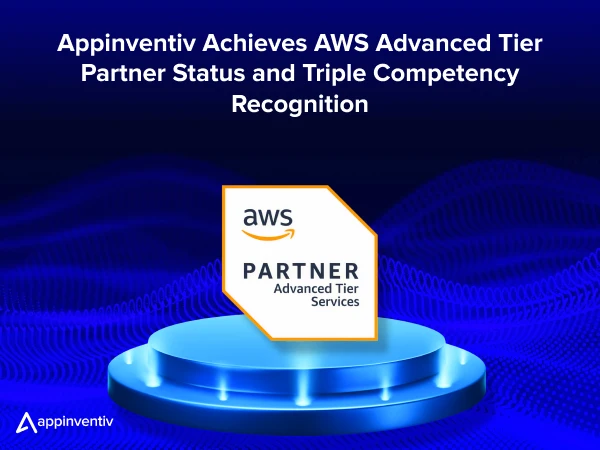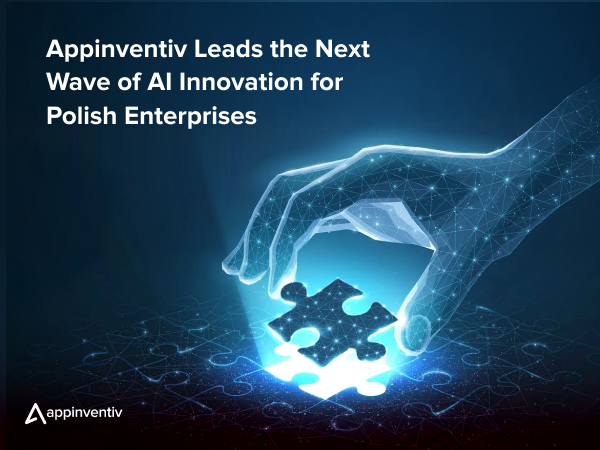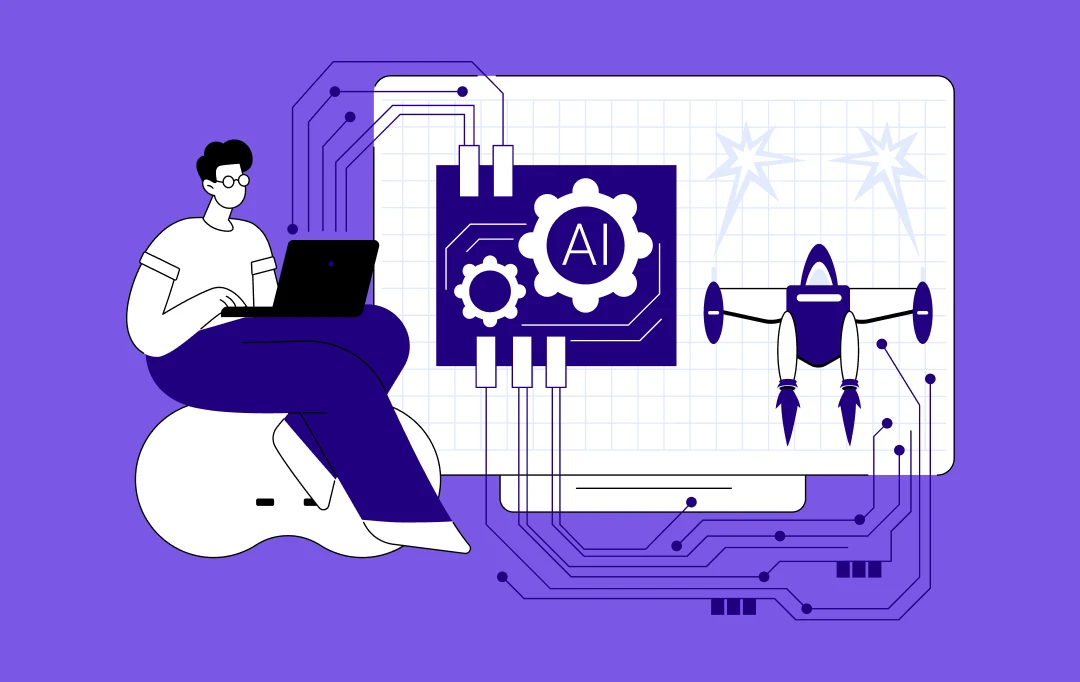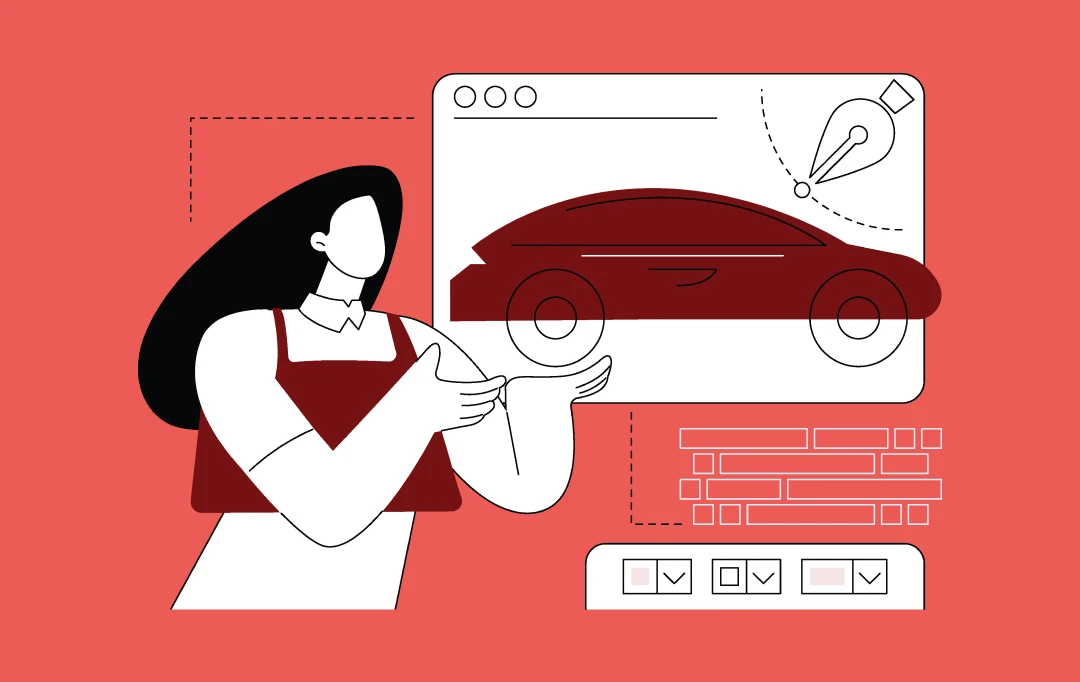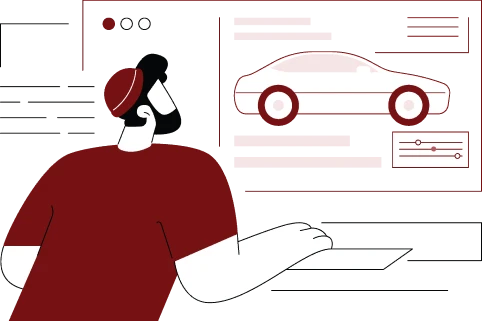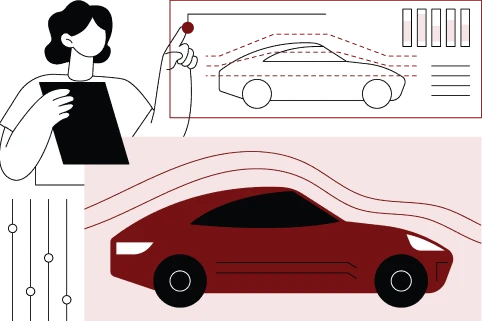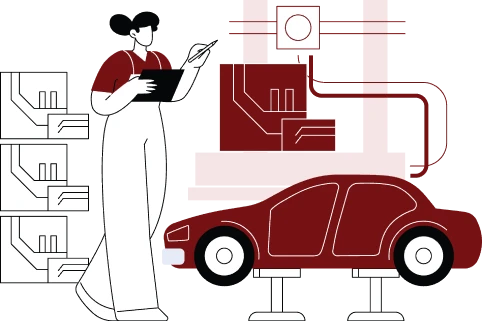- How is Software Driven Vehicle Different From Connected and Autonomous Vehicles?
- What are the Types of Software-Defined Vehicles
- What are the Real Benefits of Software Defined Vehicles
- Software Defined Vehicle Architecture: Building the Future Layer by Layer
- Core Architecture: The Foundation of Every Software Driven Vehicle
- Advanced Capabilities: Unlocking Intelligence, Agility, and Monetization
- What it Takes to Build Smarter Vehicles - SDV Development Process and Cost
- Cost of SDV Development: What to Expect
- Timeline to MVP
- The Roadblocks Ahead: Challenges of SDV Development
- The Opportunity Behind the Obstacles
- FAQs
Key takeaways:
- SDVs vary in architecture—from embedded software enhancements to software-first EVs—each posing different OEM challenges.
- Turning the vehicle into a platform unlocks faster updates, better UX, recurring revenue, and data monetization opportunities.
- A unified tech stack and tight integration between software and manufacturing drive long-term SDV success despite high initial costs.
- Challenges like legacy systems, cybersecurity, and regulation can become competitive advantages with the right SDV strategy.
The auto industry isn’t just evolving – it’s shifting into an entirely new operating model. Traditional carmakers once built vehicles with fixed features, rigid hardware, and product cycles that spanned years. But today, success is measured in software updates, real-time data, and continuous user experience upgrades.
Enter the Software Defined Vehicle – a transformation that’s turning every car into a dynamic, upgradeable, and fully connected computing platform on wheels. This isn’t hype. It’s a fundamental shift in how vehicles are designed, built, sold, and monetized.
From EV-first disruptors to legacy giants now rethinking their core, SDVs are becoming the strategic centerpiece of modern automotive roadmaps. And for CEOs, it’s no longer just a matter of innovation, it’s a matter of survival.
Because in an SDV in the automotive world, differentiation doesn’t come from horsepower or trim but from your ability to control the software layer, unlock recurring revenue, and future-proof your business in a landscape shaped by data, personalization, and OTA updates.

This article breaks down everything you need to know from the real business case behind every software defined vehicle strategy to the tech architecture, use cases, and monetization models that matter. Whether you’re building EVs, fleets, or next-gen infotainment ecosystems, the message is clear:
Let us help you build a strategy that adapts, scales, and leads.
How is Software Driven Vehicle Different From Connected and Autonomous Vehicles?
It’s easy to confuse terms like software defined vehicle, connected car, and autonomous driving – after all, they all involve advanced tech, data exchange, and futuristic capabilities. But lumping them together misses the point and more importantly, the opportunity.
A software defined vehicle isn’t just a car that connects to the cloud or drives itself. It’s a fundamentally re-architected machine where software, not hardware, defines capabilities from infotainment to drive dynamics, and from safety to monetization.
In contrast, a connected car is typically a vehicle with telematics, cloud access, and app integrations – think navigation, diagnostics, remote start. It relies on data transmission, but its core functions are still largely hard-coded and static. It uses connected car software to enhance the experience, but doesn’t change what the car is over time.
Meanwhile, autonomous vehicles are purpose-built to drive themselves using AI, sensors, and complex decision systems. While autonomy may run on software, it’s just one application of a larger SDV foundation.
What makes a software defined car different is that it’s built with the architecture of a digital product:
- Centralized computing platforms instead of dozens of isolated ECUs
- Over-the-air updates that continuously improve or unlock features
- A separation between hardware and software life cycles
- Deep integration of embedded systems in automotive that support dynamic configuration
In an SDV, the connected car software becomes the core business logic, allowing automakers to roll out paid upgrades, respond to user behavior, and stay agile in a way that connected or autonomous systems alone can’t deliver.
Put simply:
- A connected car talks to the outside world.
- An autonomous vehicle navigates the world.
- But a software-defined vehicle adapts to the world – and keeps evolving in it.
For CEOs and tech leaders, that distinction matters. Because while connectivity and autonomy are features, SDV is a strategy.
What are the Types of Software-Defined Vehicles
There’s no single blueprint for building a software-defined car – instead, automakers are evolving along a spectrum, depending on how deeply software in cars influences performance, control, and value delivery. This isn’t about just adding a few apps to the dashboard, it’s about rethinking the entire vehicle lifecycle through a software-first lens.
Broadly, today’s automotive landscape features four types of software defined vehicles, each representing a step toward full SDV maturity:
- Digitally Enhanced Vehicles
These are traditional vehicles (ICE or EV) with added digital features such as infotainment upgrades, smartphone integration, or basic remote diagnostics. Think of these as feature-enhanced cars where software plays a role, but the hardware still defines the car’s core identity.
- Software is layered over legacy ECUs
- OTA updates are often limited to navigation or media
- Not built to adapt functionally after production
For legacy OEMs, this is often the starting point before transitioning to deeper software control.
- Domain-Centric SDVs
At this stage, the software driven vehicle begins to consolidate functions by domain – such as ADAS, powertrain, or HVAC – using zonal controllers and gateway architectures. Some over-the-air updates are possible, especially for performance tuning, UX, and safety features.
- Software in cars begins to control safety-critical domains
- Data is captured and shared across systems, enabling better diagnostics
- Partial decoupling between hardware and functionality
These types of software defined vehicles are increasingly common in newer EV models and mid-cycle refreshes from major OEMs.
Also Read: How EV Technology and Software Are Tackling Key Barriers to Electric Vehicle Adoption
- Centralized Compute SDVs
This is where the vehicle becomes truly software defined. A small number of high-performance compute units replace dozens of ECUs, running containerized or virtualized applications across all major functions from power distribution to cabin personalization.
- Vehicles support continuous software updates and app-level upgrades
- Central compute allows for real-time decisioning and dynamic feature rollout
- New business models emerge – from in-car subscriptions to usage-based features
This is the core model behind SDV leaders like Tesla and what brands like GM, Mercedes-Benz, and Hyundai are actively building toward.
Also Read: How Much Does It Cost to Build a Tesla-like Supercharger?
- Cloud-Integrated & AI-Driven SDVs
This is the frontier – a software defined car that operates as part of a connected mobility network. These vehicles sync deeply with cloud infrastructure for OTA diagnostics, fleet coordination, personalized experiences, and even autonomy support.
- Integrated AI and ML models support predictive behavior and contextual adaptation
- Seamless V2X communication enables smart city and traffic system integration
- Vehicles act as service platforms: MaaS, energy grid integration, and more
These are not just cars – they’re rolling edge nodes in a much larger digital ecosystem.
As more software in cars becomes responsible for defining value, differentiation shifts from horsepower and hardware to experience, adaptability, and data.
For automotive CEOs, understanding where your fleet currently sits on this spectrum and how to transition from one stage to the next is now a strategic priority. Because in the next wave of mobility, it’s not just about making great types of software defined vehicles it is also about building great software platforms that happen to move.
What are the Real Benefits of Software Defined Vehicles
A solid software defined vehicle strategy isn’t just about staying ahead of the curve but a way to generate real, recurring value in the here and now. Whether you’re rethinking a legacy lineup or developing a new platform from the ground up, SDVs open doors to faster innovation cycles, tighter cost control, better customer experiences, and entirely new revenue streams.
Here’s why every OEM, supplier, and mobility provider needs to take SDV in automotive seriously:
- Continuous Product Evolution
With a software defined car, the product doesn’t freeze at the factory gate. You can release new features, safety upgrades, or UX enhancements post-sale through over-the-air updates.
This lets you stay competitive in real time – not just every model cycle. Imagine a driver waking up to a smarter ADAS experience or new in-cabin apps, without visiting a service center. - Platform-Level Monetization
Software driven vehicles open the door to recurring revenue. Think dynamic subscriptions for performance upgrades, seat heating, enhanced navigation, or concierge services. This turns your vehicle from a one-time sale into an evolving services platform where value grows over time, and so does lifetime revenue. - Reduced Hardware Dependency
When you decouple software from hardware, the benefits of software defined vehicles become far more accessible. Think fewer SKUs to manage, platforms that scale with ease, and longer product life spans without major redesigns. Rather than reworking entire ECU layouts, updates can be pushed through centralized computing and modular software stacks. For procurement and R&D teams, that means faster development, fewer vendor complications, and far more predictable budgeting. - Smarter Operations with Data Feedback Loops
Connected car software is no longer just about infotainment – it’s the backbone for real-time diagnostics, predictive maintenance, and usage-based services. With embedded intelligence, every software defined car becomes a rolling data generator. That data feeds not just your technical teams, but your marketing, aftersales, and product innovation loops as well. - Future-Ready Ecosystem Integration
Whether you’re looking at V2X communications, energy grid integration, autonomous capabilities, or AI-powered driver assistance none of it scales without a robust SDV in automotive architecture. A connected car might talk to the world. A software driven vehicle acts on it. - Enhanced Safety and Regulatory Compliance
Car makers no longer have to issue recalls or rely on service centres just to fix software glitches. With SDVs, updates can be delivered instantly across the fleet without grounding a single vehicle. That kind of agility isn’t just convenient. It’s a game-changer for safety, regulatory approvals, and cross-market launches. Whether it’s keeping up with shifting emissions standards or patching cybersecurity vulnerabilities, the ability to respond fast matters.
The benefits of software defined vehicles aren’t promises for tomorrow, they are changing how the industry operates today. This isn’t about experimenting with edge tech. It’s about redefining how cars are built, maintained, and monetised. For companies that start early, SDVs offer a sharper edge: more flexibility, stronger margins, and a faster path to market resilience.
Software Defined Vehicle Architecture: Building the Future Layer by Layer
What makes a car “software-defined” isn’t just the code running inside it, it’s the entire system design that puts software in the driver’s seat of how the vehicle performs, evolves, and generates value.
Unlike legacy automotive platforms where functions were hardwired into dozens of ECUs, a Software Defined Vehicle Architecture centralizes intelligence, separates software from hardware lifecycles, and allows vehicles to improve after every mile – not just every model refresh.
Core Architecture: The Foundation of Every Software Driven Vehicle
- Centralized or Zonal Compute Platforms
Traditional architectures spread processing power across 80–100 ECUs. In an SDV, this shifts to high-performance zonal or centralized compute units that power multiple functions from powertrain control to driver personalization through shared, secure resources.
This streamlines system complexity and sets the stage for real-time data processing. - Hardware-Software Abstraction Layer
One of the core shifts in software defined vehicle architecture is the decoupling of hardware and software development. Using virtualized environments and abstraction layers, updates no longer require hardware redesigns – just smarter software deployment.
This architectural flexibility enables faster innovation, smoother versioning, and easier scaling. - Real-Time Embedded Systems in Automotive
Every SDV still depends on embedded systems in automotive environments but they’re now designed for dynamic workloads, high-speed communication, and fault tolerance. Whether it’s braking logic or cabin controls, these systems form the digital nervous system of modern cars. - Middleware & Service-Oriented Architecture
Middleware enables modular communication across components allowing independent software modules to be developed, deployed, and updated without reworking the entire system.
SOA is essential for SDVs that want to integrate connected services, fleet control apps, or custom driver profiles across different models or markets. - Tech Stack for SDV Development
The tech stack for SDV development spans multiple layers:
- Embedded RTOS and firmware
- Hypervisors and container runtimes
- Application orchestration (for infotainment, diagnostics, ADAS)
- Cloud integration for fleet-level insights, OTA deployment, and remote analytics
To build and maintain this stack, OEMs must blend automotive-grade safety standards with agile software workflows.
- Over-the-Air Update Pipeline
From infotainment to drive dynamics, all modules in a software defined car must support secure, over-the-air updates. This reduces service costs, improves fleet safety, and lays the foundation for post-sale revenue generation.
Advanced Capabilities: Unlocking Intelligence, Agility, and Monetization
- Digital Twin Integration
Many SDV pioneers now integrate cloud-based digital twins – virtual replicas of the physical vehicle that track performance, usage, wear, and health over time.
Digital twins allow predictive maintenance, usage-based service planning, and deeper driver insights vital for commercial fleets and premium customer experiences.
- Cloud-Edge Coordination
Today’s self-driving car software architecture requires constant coordination between onboard compute and cloud platforms. From AI model updates to usage telemetry and feature analytics, a fluid edge-cloud architecture ensures that vehicles are learning and adapting even when they’re parked. - Embedded Cybersecurity Frameworks
With great software comes greater attack surfaces. SDVs must embed protection at every level from hardware root of trust and secure boot protocols to intrusion detection systems and encrypted OTA channels. Cybersecurity in the IoT powered SDV ecosystem isn’t optional; it’s core to earning trust in connected, autonomous, and fleet-based use cases. - AI & ML Deployment Pipelines
Whether for driver monitoring, predictive maintenance, or personalized UX, ML models are now essential components of SDV in automotive. The architecture must allow local inference (on edge devices) while syncing learnings to cloud layers for fleet-wide improvements – a non-negotiable in autonomous readiness. - Data Abstraction & Management Layer
Modern software defined vehicles generate massive volumes of sensor, driver, and usage data. Not all vehicle data is created equal or needs to be handled the same way. In a real-world setting, you don’t want a song change competing with a brake warning for processing power. That’s where smart layering comes in. A thoughtful self-driving car software architecture separates time-sensitive signals like collision alerts from background data such as infotainment stats or map history.
This isn’t just technical housekeeping; it’s core to an effective software defined vehicle strategy. It allows the vehicle to react instantly when it matters, while still syncing useful insights to the cloud for diagnostics, remote support, and continuous learning across the fleet.
- Open API Layer & Developer Ecosystem
A software defined car shouldn’t be a closed box. If you want to unlock real innovation and keep unlocking it over time SDVs can’t be closed systems. They need an open API architecture that invites developers, suppliers, and partners to build on top of the core platform. That means controlled access to things like vehicle telemetry, status data, user preferences, and service orchestration layers. Even OTA update triggers can be exposed safely through secure authentication, giving external tools the power to interact with the car without compromising its integrity.
The result? A faster rollout of features, third-party integrations (like insurance, maintenance, or EV charging), and brand-driven experiences that adapt over time.
- Interoperability for Future Mobility
The next generation of software in cars won’t exist in isolation. From V2I communication to roaming across EV charging networks, or syncing with smart cities and digital wallets, interoperability isn’t a bonus, it’s the baseline. For SDVs to thrive in the changing mobility ecosystems, their architecture has to speak multiple languages, which means multi-protocol support, backwards compatibility, and readiness for evolving standards like 5G, V2X, and edge AI.
A strong software defined vehicle strategy isn’t just about what works today, it’s about staying compatible with whatever comes next.
What it Takes to Build Smarter Vehicles – SDV Development Process and Cost
Building a software defined vehicle isn’t a feature upgrade. It’s a full system rethink. You’re not just adding new software, you’re reshaping how the entire vehicle gets designed, developed, and supported after it leaves the factory floor. That’s why every automotive decision-maker needs to look beyond just the tech. The SDV development process comes with real cost, real complexity, and real payoff. But if you want to stay relevant five years from now, understanding that trade-off is where your strategy has to start.
Let’s break it down into what it really involves.
The SDV Development Process: From Platform to Product
- Requirement Definition & Use Case Planning
Every SDV build starts with clarity: What do you want the software to control, monitor, or adapt? Whether it’s dynamic drive modes, over-the-air updates, or V2X communication, this phase defines user flows, compliance boundaries, and monetization paths. It also helps you scope your tech stack for SDV development realistically. - Platform & Hardware Selection
You’ll need to decide whether to build on centralized compute, zonal architectures, or leverage existing ECUs selectively. The choice directly impacts latency, update flexibility, and cost. Many automotive players also choose between building an in-house stack or partnering with middleware providers to accelerate time to market. - Software Stack Architecture
At this point, the SDV in automotive starts taking shape. You’ll design the software layers embedded OS, middleware, service orchestration, cloud APIs and define how they’ll interact. Safety compliance (ASIL levels), OTA frameworks, and sandboxed environments for third-party apps are often built in here. - Development & Integration
This is where code meets hardware. Your teams or partners will develop the actual applications – connected car services, infotainment modules, ADAS systems, and smart diagnostics and integrate them with real-time embedded systems. Edge-cloud syncing and CI/CD pipelines become critical during this phase. - Validation, Security & Compliance Testing
Before hitting the road, the platform undergoes rigorous testing across vehicle functions, cybersecurity protocols, regulatory benchmarks, and update safety nets. This phase includes penetration testing, performance benchmarking, and certifying OTA frameworks especially vital when deploying globally. - Deployment & Lifecycle Support
After production, the work doesn’t stop. With a well-executed software defined vehicle strategy, your post-sale roadmap includes OTA feature rollouts, remote diagnostics, subscription services, and compliance updates. The vehicle becomes a platform for ongoing engagement, not just a delivered product.
Cost of SDV Development: What to Expect
The cost of SDV development varies widely depending on the scope, scale, and depth of integration. However, here’s a general range and what influences it:
| Stage | Cost Range (USD) | Cost Drivers |
|---|---|---|
| Platform Setup & Planning | $100K – $500K | Architecture planning, compliance consulting |
| Middleware & Embedded Development | $1M – $5M+ | Safety-critical software, real-time OS, driver integration |
| Application Layer (UX + Services) | $500K – $2M+ | Infotainment, fleet control, over-the-air modules |
| Cloud & OTA Infrastructure | $300K – $1.5M | CI/CD setup, cloud storage, update systems |
| Cybersecurity & Compliance | $250K – $1M | Secure boot, intrusion detection, data handling |
Additional long-term costs come from OTA maintenance, cloud storage, analytics, API monetization infrastructure, and compliance reporting.
Timeline to MVP
A basic SDV platform with OTA and limited cloud integration may take 12–18 months from planning to deployment. A fully-featured SDV with third-party APIs, autonomy layers, and dynamic user personalization can span 24–36 months, depending on the use cases and regulatory scope.
Why This Matters
SDV automotive software development services is a marathon, not a sprint but those who start now build the muscle for future monetization. Every update pushed, every API opened, and every cloud-linked feature is a chance to transform one-time buyers into recurring digital customers.
A clear software defined vehicle strategy not only reduces long-term costs but also future proofs your fleet for evolving business models, subscription features, fleet analytics, pay-per-use insurance, and beyond.
We’ll help you map the tech stack, estimate the costs, and align your roadmap with business goals.
The Roadblocks Ahead: Challenges of SDV Development
The promise of SDV in automotive is transformative vehicles that update like smartphones, monetize like platforms, and adapt like living systems. But that evolution doesn’t come without friction. For every breakthrough in software-defined mobility, there are architectural, organizational, and regulatory challenges waiting to be solved.
Let’s look at the most critical ones.
Legacy Integration and Siloed Systems
Most automakers are not starting from scratch. They’re evolving from legacy platforms with deeply embedded ECUs, fragmented software stacks, and supply chains optimized for hardware. This shift to centralized compute and modular software isn’t just a tech issue, it’s a people issue. In many companies, teams are still wired for the old way of building cars. Mechanical handles their part, electrical does theirs, software gets looped in late and they barely talk in between. That fragmentation doesn’t work when the entire vehicle experience is supposed to run on tightly integrated code.
SDV Cybersecurity Challenges
As vehicles become more connected and software-driven, they also become attractive targets. Security in SDVs isn’t a checklist, it’s a moving target. The threats go far beyond theory now. We’ve already seen how firmware-level exploits or hijacked OTA updates can ripple through thousands of vehicles at once. It’s not just about secure boot or encryption but also about designing every layer with the assumption that someone, somewhere, is trying to break in.
And yet, some teams still treat security like it’s a feature add-on, not core architecture. That’s a problem. Because when your entire vehicle runs on code, SDV cybersecurity challenges aren’t a side concern, they are the whole game.
Skills Gap and Talent Shortage
SDV platforms demand hybrid expertise – real-time embedded systems, cloud-native development, AI/ML modeling, and security-first architecture. But many OEMs struggle to attract or upskill engineers who can work across that full stack. This is not just about hiring more software engineers. It’s a deeper problem, an org design issue. Most companies weren’t built for software-first thinking.
To make SDVs work, they’ll need to rethink how teams talk to each other, how decisions are made, and how fast they can move. Mechanical, electrical, and software folks can’t just work in parallel anymore, they need to build like one unit, in one rhythm.
Regulatory Uncertainty
While the UAE, EU, and parts of Asia have made progress on digital vehicle compliance, the US still lacks cohesive federal-level standards for SDV platforms. This creates gray zones around OTA update permissions, data ownership, and software liability in the event of accidents. OEMs must therefore navigate overlapping state laws, privacy frameworks, and NHTSA guidance while trying to push innovation forward.
Constant Change = Cost Pressure
Unlike traditional vehicles that are largely “done” at launch, software defined cars are never truly finished. You’re not just building and shipping a product you are signing up for an ongoing relationship. SDVs demand continuous testing, frequent updates, real-time issue tracking, and always-on customer support. That means new cost centers pop up fast: cloud infrastructure, CI/CD pipelines, 24/7 monitoring, and a full DevSecOps setup to handle cloud security. Most legacy budgets don’t plan for this and scaling all that without burning cash becomes a serious balancing act.
Supply Chain & Vendor Complexity
You’re going to need partners – lots of them. Middleware, cloud security, compliance tooling, it’s all part of the SDV puzzle. But one weak link can mess up the entire timeline. If your vendor isn’t ASIL-certified, can’t clear ISO 26262, or ignores local data laws, you’re not just looking at delays. You could be facing legal trouble. And at that stage, it’s too late to backtrack. OEMs must build vetting frameworks that go beyond feature fit and address long-term viability and integration maturity.
The Opportunity Behind the Obstacles
The road to building a successful software-defined vehicle is filled with real, often messy challenges. Outdated ECUs, shifting compliance norms, deeply embedded legacy systems, and rising cybersecurity concerns, none of these are easy but they are also not reasons to step back. They’re signals to evolve, and to do it with the right mindset and the right tech partners.
That’s where Appinventiv – an ISO-certified, CMMI level-3 custom software development company can make a measurable difference. With experience in building automotive-grade software, over-the-air update systems, and tightly integrated embedded architectures, the team doesn’t just ship code, we collaborate closely with OEMs and Tier 1s to reimagine how SDVs are built, secured, and scaled in today’s fast-moving market.
This transition isn’t just about keeping up – it’s about staying ahead. Companies that approach SDV development with strategic clarity and execution support gain far more than functional software. They unlock recurring revenue streams, richer in-car experiences, faster upgrade cycles, and stronger brand trust.
The real risk isn’t the complexity. It’s assuming yesterday’s playbook will still work. With the right technology partner, those same roadblocks can become reasons you lead the curve, not lag behind it. Get in touch!
FAQs
Q. Is Tesla a software-defined vehicle?
A. Yes, Tesla is probably the best real-world example of a software-defined vehicle, everything from how the car drives to how the interface feels is software-based. Performance boosts? Sent over-the-air. New features? Just an update away. Tesla’s entire architecture is built around centralized computing, making the vehicle more like a rolling device than a traditional car.
But it’s not just about features – Tesla’s architecture separates hardware and software lifecycles, allowing the car to evolve after it’s sold. That’s the essence of an SDV.
Q. What’s the connection between software-defined vehicles and self-driving vehicles?
A. Autonomous vehicles might be the best outcome of SDV architecture but they are not the whole story. Self-driving tech is built on AI, sensor fusion, and instant decision-making, all of which sit on top of a software-defined foundation. So yes, every autonomous car is an SDV by design. But not every SDV is chasing autonomy. Many are built to deliver predictive maintenance, in-car commerce, or real-time driving personalization long before full self-driving enters the picture.
Q. Why is SDV important for automotive CEOs?
A. Because carmaking is no longer just about hardware it’s about creating a product that evolves. A software-defined vehicle gives automakers the tools to stay connected with the customer long after the sale. Features can be added, performance can be improved, and services can be sold all without the customer stepping into a dealership, for CEOs, this transforms the business from selling a vehicle once to building a long-term revenue engine that adapts with the market.
Q. How does a software defined vehicle strategy benefit the automotive industry?
A. SDV strategy is changing how the entire industry operates. Automakers can simplify production by replacing dozens of ECUs with centralized computing systems. Developers gain a flexible software environment to build and deploy new features. Drivers get cars that evolve through updates, personalization, and new capabilities over time. And across the board, SDVs shorten time-to-market, support continuous upgrades, and move the industry closer to a truly digital-first model.
Q. What role does AI play in software-defined vehicles?
A. Most modern cars run on software. But in a software-defined vehicle, intelligence runs deeper and AI is at the heart of that. It’s not just about enabling smarter driving or voice recognition. What matters is how the system picks up on patterns: a worn brake pad, a dip in battery efficiency, a change in how the driver takes corners.
Over time, this data doesn’t just sit idle. The car starts reacting – adjusting systems, making suggestions, even preventing issues before they arise – this kind of intelligence when layered with connected sensors and real-time analytics, shifts the car from being a finished product to something that keeps evolving long after it leaves the factory.


- In just 2 mins you will get a response
- Your idea is 100% protected by our Non Disclosure Agreement.

How Much Does It Cost to Build a White-Label Enterprise Procurement Software?
Key takeaways: The development of white-label enterprise procurement software typically costs between $50,000 and $500,000, depending on complexity and features. Key features include vendor management, budget tracking, purchase approvals, and invoice automation. Flexible monetization models - from modular licensing to integration fees- can future-proof revenue streams. Building a custom white-label solution gives you long-term control…

A Clear Breakdown of Custom Software Development Costs for Businesses in Canada
Key takeaways: Custom software in Canada typically ranges from CAD 55,00 to 550,000 ($40,000 to $400,000), depending on scope, integrations, and compliance. Costs rise in regulated sectors due to PHIPA, PCI DSS, AML rules, and strict Canadian data residency requirements. Planning, modular architecture, and cloud native services help control the software development cost in Canada…

The Real Cost of Building Professional Delivery Management Software
Key takeaways: Custom delivery management software has complete flexibility, scale, and integration, which conforms to the distinctive requirements of business. Fluid connection to ERP, CRM, and payment systems also introduces a large amount of complexity and additional cost, but is the key to efficiency. It is important to design scalable systems to grow in the…








